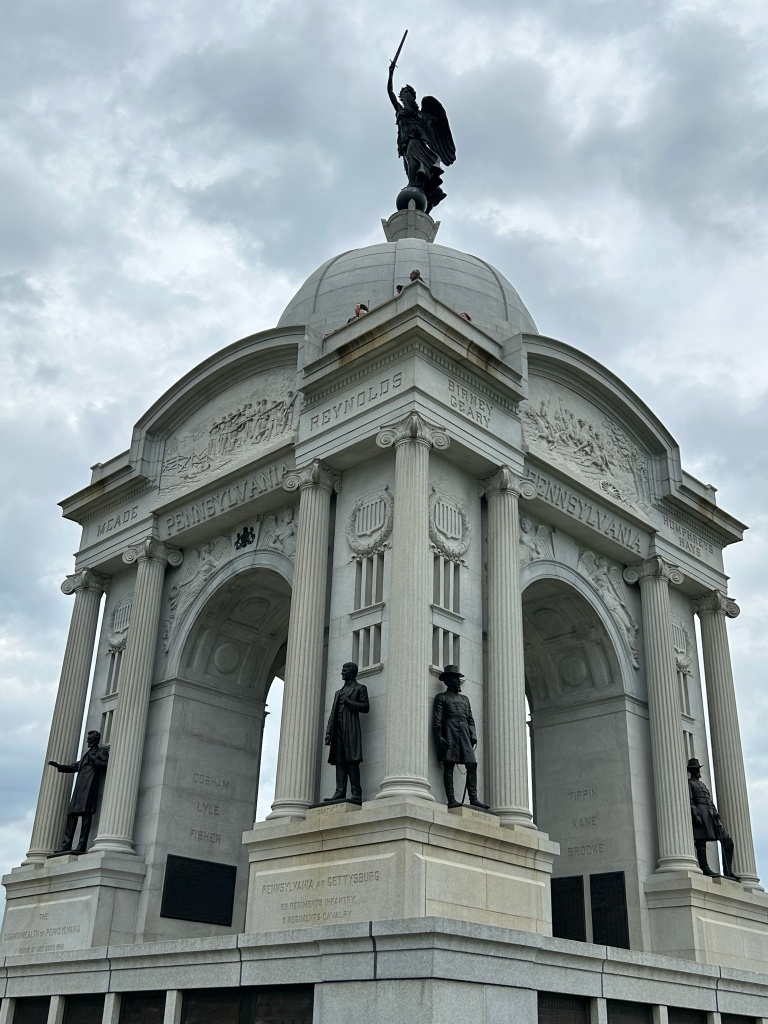
This grand Pennsylvania monument is appropriate for this critical turning point in the Civil War in July of 1863. Lee’s northernmost advance on Washington ended, his retreat to Virginia began, and with Vicksburg ending a day later, Lincoln finally had the victory he needed to prove the Union capable of winning the war. The battlefield runs right through town, with bullet-hole houses, up onto Cemetery Hill, where the Union lines held off Lee’s massive frontal assault—a reversal of the usual Union v Confederate roles. The land has been carefully preserved to evoke the day, and the park app’s auto tour tells the many stories of bravery, such as Hancock’s numerous maneuvers in the nick of time. Visiting the cemetery brings Lincoln’s address to life. This is another powerful park to remember this Memorial Day weekend.
Gettysburg has the finest museum at any of the military and battlefield parks. Particularly the park film, short films, quotations, exhibits, bookstore, and, well, everything. It’s worth paying the extra fee to the park partner that runs it. Through first rate research, they get the balance correct between views at the time and the facts. It takes longer to see than most park museums, but for once I felt I understood not just the battle, but the context and meaning behind the struggle. There’s also a phenomenal period panoramic painting of the battle, which is a historic work of art itself. And if you are able to hire a park guide to take you around the battlefield in your own car, that’s the best way to get your questions answered and make sense of the three day battle over much of the same ground. My brother and I were extremely fortunate to secure the expert assistance of our former teacher, who has many years of experience working here and to whom we are very grateful.
Many Civil War sites bend over backwards to present ethically indefensible archaic views as valid, as if they are obliged to reprint Confederate propaganda without context. But that would be like presenting ‘witchcraft’ as valid, because it was believed in colonial Salem. Not only does Gettysburg get it right, but they also clearly blame the north for their role in whitewashing history. Segregationist President Woodrow Wilson supported Jim Crow restrictions to get African Americans back to work for low wages and to win white votes. Most of the Confederate monuments I find objectionable are only 100 years old and come from this era of white northern and southern ‘reconciliation’. We still need to fix this historic problem of treating both sides as having fought for valid causes.
Pingback: Fredericksburg and Spotsylvania County Battlefields Memorial National Military Park | Zero Carbon Travel
Pingback: Eisenhower National Historic Site | Zero Carbon Travel
Pingback: Favorites from 300 Park Sites | Zero Carbon Travel
Pingback: All Parks in the Mid-Atlantic, Zero Carbon | Zero Carbon Travel
Pingback: All Civil War Battles, Zero Carbon Travel | Zero Carbon Travel
Pingback: All Civil War Battles, Zero Carbon Travel | Zero Carbon Travel